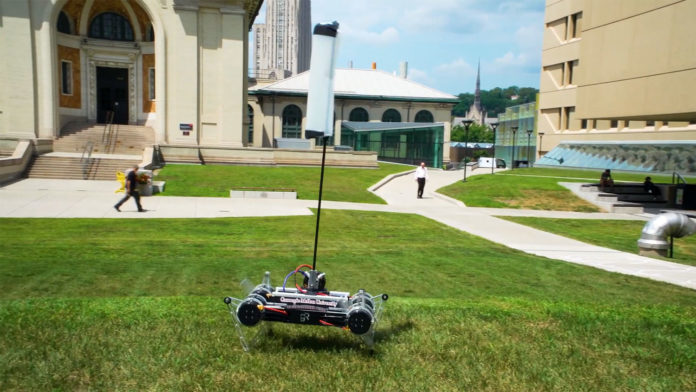In the animal kingdom, Cheetahs are known for the speed they reach in a run. They demonstrate tremendous precision and maneuverability at high speeds due, in part, to their tails. Now scientists want to take advantage of the aerodynamics of these cats’ tail to build more agile robots.
The cheetah’s lightweight furry tail is known as an aerodynamic drag tail; that is, it acts sort of like a parachute. While most robotic tails have high inertia, the cheetah’s tail uses aerodynamic drag to achieve high forces with low inertia. This ability caught the attention of researchers at Carnegie Mellon University’s Robomechanics Lab, who were working in collaboration with the University of Cape Town. But adding a tail to a robot carries disadvantages like increased mass, high inertia, and a higher energy cost.
In nature, animals with aerodynamic drag tails have a greater ability to perform reorientation tasks, such as turning and recovering after a foot slip, so researchers believe an aerodynamic drag tail will help solve problems of robotic mobility. The researchers compared aerodynamic and inertial tails to construct a tail with maximum effectiveness and minimum inertia.
“Robotic tails have historically relied on high inertia tails because of their simplicity, but nature has already figured out that there are better ways to stabilize agile motions,” said Joseph Norby, a Ph.D. student working with Aaron Johnson, an assistant professor of mechanical engineering. “This research suggests that following nature’s inspiration results in equally capable tails for a fraction of the weight cost.“
They used a lightweight material positioned on the top of the robot, acting as a balanced pendulum. They found that an aerodynamic tail can allow the robot to rotate in the air as well as an inertial tail, but the aerodynamic tail is much lighter. The robot with a tail can also accelerate faster than a robot without a tail, despite the increase in mass from the tail. This means the robot has better control over its movements like slowing down, speeding up, or turning.
“Tails help to stabilize the robot, which is critical when it is performing difficult maneuvers. We believe that improving robot agility will make our robots better at aiding people outside the lab,” said Norby.
